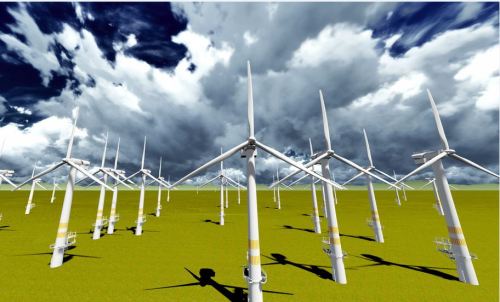 In the action to combat PM2.5 and clean air, Beijing proposed to further reduce coal-burning pollution and complete the plan to reduce the total coal-fired coal to approximately 10 million tons by 2017. All coal-fired power plants will be shut down in the next five years. The unit, which cuts 9.2 million tons of coal, has a clean power generation ratio of 100%.
In the action to combat PM2.5 and clean air, Beijing proposed to further reduce coal-burning pollution and complete the plan to reduce the total coal-fired coal to approximately 10 million tons by 2017. All coal-fired power plants will be shut down in the next five years. The unit, which cuts 9.2 million tons of coal, has a clean power generation ratio of 100%. According to the person in charge of the Beijing Municipal Development and Reform Commission, Beijing is one of the most coal-burning capitals in the world. In 2012, the total coal-fired power of the city reached 23 million tons, accounting for 25% of the total energy consumption. Among them, power plants, heating boilers, industrial and civilian bulk coal accounted for 40%, 24%, 19% and 17%, respectively.
According to calculations, of the various factors affecting PM2.5 in Beijing, energy use factors account for nearly 40%, of which emissions from coal-fired use account for approximately 16.7%. For a long time, Beijing’s local power supply and heat supply are mainly based on four coal-fired thermal power plants, which have the problem of small unit size, low energy efficiency, and heavy emissions. During the “Eleventh Five-Year Plan†period, five gas-fired thermal power plants were put into operation in Beijing to solve the problem of urban heating. However, due to the limitation of natural gas resources, the five gas-fired thermal power plants also have the problems of small unit size, low energy efficiency and unreasonable layout.
Relevant data show that, compared with traditional thermal power, natural gas power generation generates about 42% of carbon dioxide emissions from coal-fired power plants, and nitrogen oxide emissions are less than 20% of coal-fired power plants. The construction of gas-fired power plants covers an area that is generally only burning coal. Fifty-four percent of power plants can build power plants in power-hungry urban load centers to provide on-site power supply, especially for densely populated metropolises such as Beijing.
The person in charge of the Beijing Municipal Development and Reform Commission recently stated that Beijing is currently building four major thermoelectric centers to replace the existing coal-fired thermal power plants. In the future, cities will have thermal power points on all four sides, and Beijing’s energy structure will be greatly optimized. The four major thermal power centers have been fully completed, shutting down the Guohua, Shihui and Gaojing coal-fired thermal power plants in an all-round manner. After implementing the gas reform of Huaneng coal-fired thermal power plants, the company can directly reduce 9.2 million tons of coal-fired power plants, and add local clean power generation capacity of 7.2 million yuan. In kilowatts, 100 million square meters of clean heating capacity has been added to achieve the cleanliness of heating in urban centres and local power production. This means that Beijing will at least reduce emissions of carbon dioxide by 11 million tons, sulfur dioxide by 7,500 tons and nitrogen oxides by 12,000 tons per year.
How can the power supply in the capital be guaranteed if the power plant does not burn coal? It is understood that Beijing will expand the Changping, stability and other kilovolt substations through the construction of a new transmission channel and four transmission circuits to form an 11-channel, 24-circuit external power-receiver structure, with local power installed capacity controlled at 11 million kilowatts. The new electricity demand will be solved through external power adjustment, and the proportion of external power transfer will exceed 70%. At the same time, 29 new 220 kV power transmission projects and 89 110 kV power transmission and transformation projects will be built in Beijing to increase the overall power supply capacity of the power grid; and renewable energy sources such as wind power and solar energy will continue to be developed. By 2017, Beijing will be renewable. Energy generation capacity will reach 1 million kilowatts.
With the development of the times, the consumption level of people is gradually increasing. At the same time, people's entertainment methods are beginning to diversify, especially for modern young people. As a result, different kinds of electronic products are starting to be in people's lives, and the booming Electronic Cigarette industry reflects this.
Described including the upper shell, the upper shell at the top of the smoke outlet, as described in the bottom of the upper shell with airway, described with the smoke outlet in the airway and also to match the upper shell, the lower part of the shell described the airway in the direction of the lower shell extension, as described in the lower shell near one end of the upper shell is equipped with oil mouth, described the lower shell with batteries, described at the bottom of the bottom shell has come in The air port is provided with an oil storage bin in the lower shell, and the air passage passes through the oil storage bin and is provided with a heating atomization bin at one end away from the smoke outlet. The utility model has beneficial effects: it can meet the smoking habit of different users, avoid the premature end of the use experience caused by excessive consumption of smoke oil, and indirectly prolong the service time and life of the product.
Refillable E-Cig Oem,Refillable Vape Pod,Refillable Vape Pen Oem,Refillable Mod Oem
Shenzhen MASON VAP Technology Co., Ltd. , https://www.masonvap.com